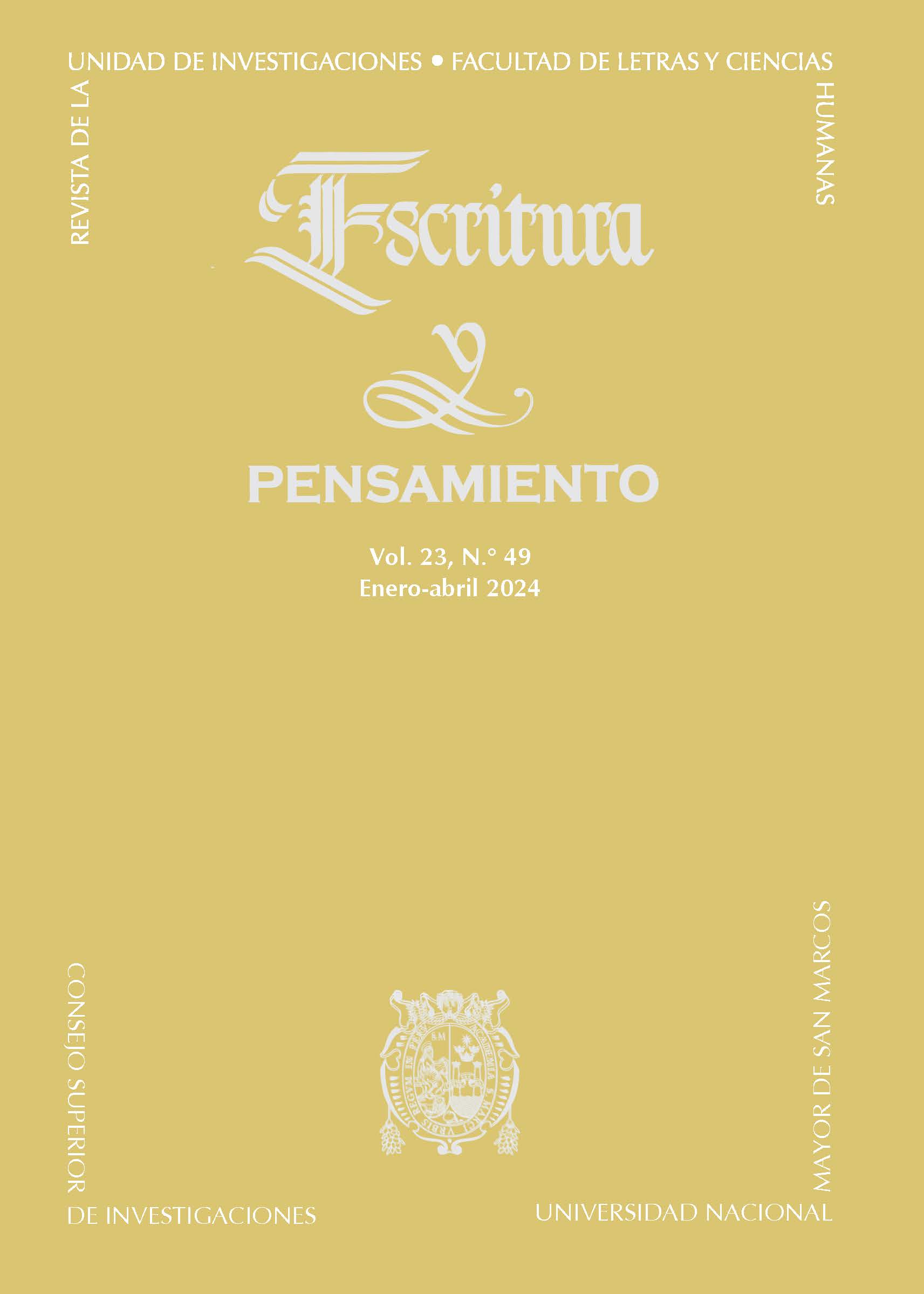Una aproximación al rol del personaje femenino en la narrativa temprana de Enrique Congrains Martin
DOI:
https://doi.org/10.15381/escrypensam.v23i49.27107Palabras clave:
género, feminidad, masculinidad, Congrains, narrativa peruana, SegatoResumen
La obra de Enrique Congrains Martin (1932-2009) resulta todavía un campo de exploración pendiente para la crítica literaria. Dentro de su representación de la marginalidad urbana limeña, se exploran diferentes formas de exclusión y desarraigo que son producto de las nuevas jerarquías sociales que se van estableciendo. Particularmente, resulta interesante ahondar en los personajes femeninos que aparecen en la narrativa temprana del autor, pues, desde la perspectiva que se planteará en este artículo, es en su construcción que se evidencia el reconocimiento de la relevancia de la conciencia de género para la construcción de la identidad. Por ende, se analizarán los relatos “Los Palomino” y “Domingo en la jaula de esteras” para demostrar cómo, mediante las oposiciones con los personajes masculinos, se detecta un interés incipiente de plantear personajes femeninos con mayor capacidad de agencia.
Referencias
Barrig, M. (1981). Pitucas y marocas en la nueva narrativa peruana. Hueso Húmero, 9, 73-81.
Campuzano, O. P. (2022). Perspectiva léxico-semántica de lo cholo en Lima, hora cero y Kikuyo de Enrique Congrains. Lengua y Sociedad, 21(2), 567-582.
Cisneros, L. J. (1961). Fisonomía actual de la literatura peruana. Fanal, 16 (59), 2-8.
Congrains Martin, E. (1959). Antología del cuento hispanoamericano. Santiago de Chile: Zig Zag.
Congrains Martin, E. (1955). Lima: Hora Cero. Lima: Populibros.
Eslava, J. (2008). Adolescentes en la ciudad. Una visión de la narrativa peruana del siglo XX. Lima: Fondo Editorial UCSS.
Luchting, W. (1974). La mujer o la revolución: análisis de No una, sino muchas muertes de Enrique Congrains M. Lima: Ecoma.
Pacheco, G. (2009). De la otredad a la identidad: perspectivas de teoría feminista de fines del siglo XX. Revista de Lenguas Modernas, 10, 353-359. <https://revistas.ucr.ac.cr/index.php/rlm/article/download/8898/8378/>
Richard, N. (1994). ¿Tiene sexo la escritura? Debate feminista, 9, 127-139. <https://www.jstor.org/stable/42624218>
Rubio Bautista, D. J. (2011). Neorrealismo a la limeña en “Lima, hora cero”: Aproximaciones a la narrativa de Enrique Congrains Martin. Cuadernos Literarios, 6 (9), 69-88.
Segato, R. (2018). Contra-pedagogías de la crueldad. Buenos Aires: Prometeo Libros.
Stagnaro, G & Zevallos, J. (2008). Me he propuesto hacer literatura no peruana, muy conscientemente: entrevista con Giancarlo Stagnaro y Johnny Zevallos. El Hablador, 13. <https://www.elhablador.com/central13.htm>
Ubalde Enríquez, A. (2016). La identidad adolescente en la narrativa urbana de 1950 y 1960: No una, sino muchas muertes, “Alienación”, Los Inocentes y Los Cachorros. [Tesis para optar por el grado de Magíster en Literatura con mención en Estudios Culturales], Universidad Nacional Mayor de San Marcos. Facultad de Letras y Ciencias Humanas, Lima. <https://cybertesis.unmsm.edu.pe/handle/20.500.12672/5705>
Vian, E. (2019). Una mirada desde los márgenes: Lima entre Ribeyro y Congrains. Rassegna Iberística, 89, 29-42.
Publicado
Número
Sección
Licencia
Derechos de autor 2024 Valery Quezada Morante

Esta obra está bajo una licencia internacional Creative Commons Atribución 4.0.
Los autores retienen sus derechos:
a. Los autores retienen sus derechos de marca y patente, y tambien sobre cualquier proceso o procedimiento descrito en el artículo.
b. Los autores retienen el derecho de compartir, copiar, distribuir, ejecutar y comunicar públicamente el articulo publicado en la revista Escritura y Pensamiento (por ejemplo, colocarlo en un repositorio institucional o publicarlo en un libro), con un reconocimiento de su publicación inicial en la revista Escritura y Pensamiento.
c. Los autores retienen el derecho a hacer una posterior publicación de su trabajo, de utilizar el artículo o cualquier parte de aquel (por ejemplo: una compilación de sus trabajos, notas para conferencias, tesis, o para un libro), siempre que indiquen la fuente de publicación (autores del trabajo, revista, volumen, numero y fecha).





